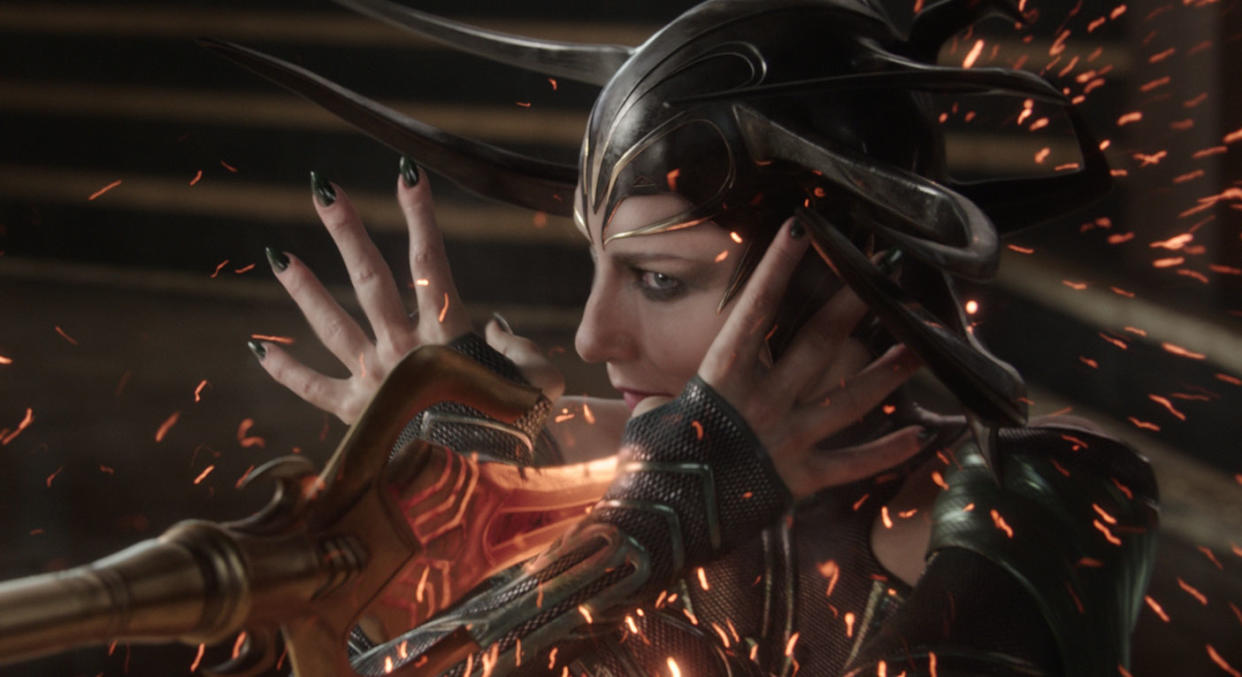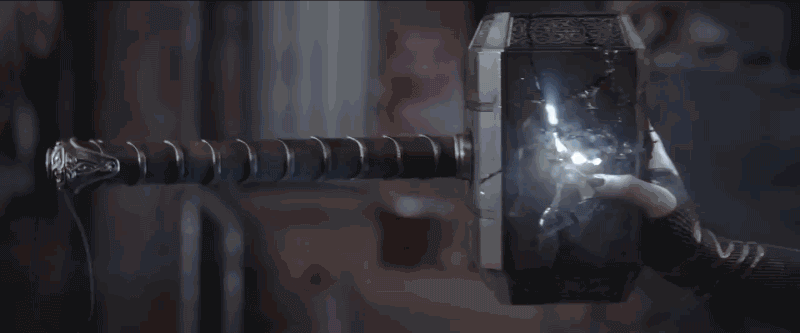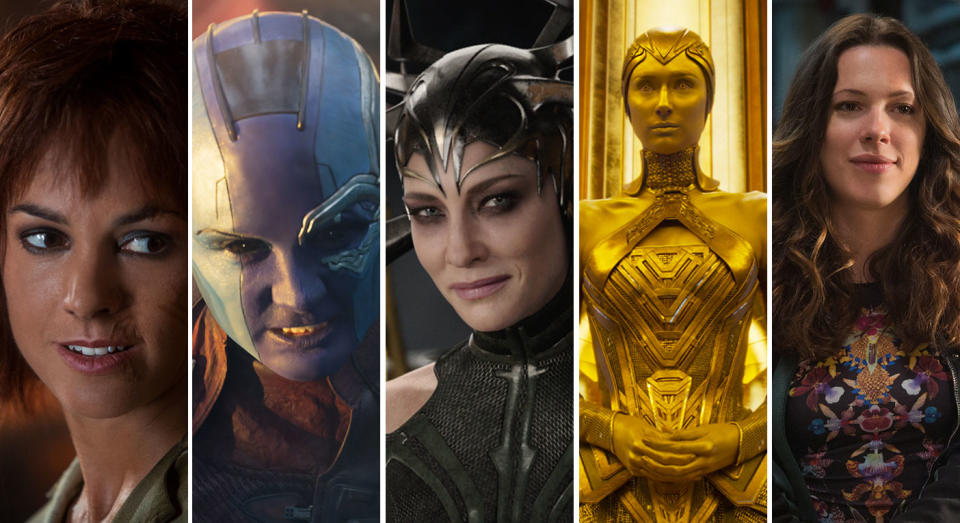Why Thor: Ragnarok's Hela is the female Marvel villain we've all been waiting for

In M. Night Shyamalan’s ‘Unbreakable’, Elijah Price tells David Dunn, “in a comic, you know how you can tell who the arch-villain’s going to be? He’s the exact opposite of the hero.”
Well, in ‘Thor: Ragnarok’, that’s arguably the case for Cate Blanchett’s Hela, the Goddess of Death, who’s the first major female super villain in the Marvel Cinematic Universe, and boy have we been waiting a long time for her to arrive.
While Thor (Chris Hemsworth) is a symbol of paramount good, Hela embodies pure evil and doesn’t pretend to be anything else. “She’s been locked away for millennia getting more and more cross,” Blanchett said of her character, “and then, with a mistake, she gets unleashed and she ain’t getting back in that box.” The comic book villain is based on the deity Hel and though director and writer Taika Waititi has played a lot with her character biography for the new film, the fundamentals are still there. She wants power and total domination and will bring death and destruction if it means wielding complete power over Asgard and the Nine Realms.

Hela is even a physical match for Thor and his magical hammer Mjolnir, which she is able to stop in its tracks and even neuter the thought-to-be indestructible tool (no spoiler, that’s in the trailers). Seeing her brandish this level of strength and power is like nothing we have ever seen a female character do in the MCU and it is rather empowering to watch, even if she is a villain.
There have been seventeen movies produced in the MCU since 2008, including the latest from Waititi, which have featured 50 villains and only five of them have been female. Brandt (Stephanie Szostak) was one of Killian’s Extremis-enhanced henchman in 2013’s ‘Iron Man 3’ who met a fiery end while Maya Hansen (Rebecca Hall) was a reluctant baddie who created the unstable serum. Both women are rather forgettable additions to the MCU’s fraternity of villains, functioning as pawns of the main male villain of the movie.

A year later Nebula was introduced in 2014’s ‘Guardians of the Galaxy‘. The Luphomoid assassin and adopted daughter of Thanos (Josh Brolin) is once again not a villain in her own right but a tool for her father and his evil ally Ronan the Accuser (Lee Pace). She has great strength and fighting ability but throughout the film she is depicted as a woman desperately seeking the approval of her abusive father and showing unrelenting jealousy of her adopted sister Gamora (Zoe Saldana). Later, in ‘Guardians of the Galaxy Vol. 2’, Nebula lets go of her hate for her sister and becomes more of an anti-hero than villain as she helps them in their final battle against Ego (Kurt Russell).
That film also introduced Ayesha (Elizabeth Debicki), the high-priestess of the Sovereign race, as an adversary to the Guardians and some people have suggested that she is a villain too, but is she really? She hired the Guardians to defeat a monster and only went after them because Rocket stole one of their precious batteries. Justice is the reason for her continued assaults on the reformed criminal team which doesn’t really scream “big bad villain” to me.
With all these female villains, the writers have given you a reason to empathise with their descent into “badness.” Brandt had lost her arm and felt loyal to Killian because he mended her with the Extremis serum while Maya wanted to help people but was corrupted by her benefactor in her pursuit of science. Nebula was abused by her father and constantly pit against Gamora, and Ayesha was just trying to get justice against a thief who stole from her people. This is not to say that male villains in the MCU have not been written sympathetically too. Loki, Vulture and The Winter Soldier were given nuanced back stories that show they are not 100 percent bad and it made their storylines far more relatable to the viewer. However, sometimes it works to have a villain actually just be pure evil in their pursuit of power like Red Skull, Thanos and Dormammu, without some soppy backstory to explain their motives.
Look at Nurse Ratched from ‘One Flew Over the Cuckoo’s Nest’ whose tyrannical reign over the patients at Salem State Hospital has made her one of the most formidable villains in both literary and cinematic history alike. Similarly, Dolores Umbridge from the ‘Harry Potter’ franchise is one of the most sinister baddies in recent years because of the juxtaposition between her prim appearance and immoral actions that grow more wicked the more powerful position she climbs to.

Even the original Maleficent in ‘Sleeping Beauty’ proved to be pure evil for the sake of being evil by using the excuse of not being invited to Aurora’s Christening to curse the child. She then preys on the princess and her true love Prince Phillip, even turning into a dragon to try and destroy him.
As Disney Imagineer, Laurent Cayuela, points out, “You can’t have a good story if you don’t have a good villain. Maleficent is the archetype of what a villain should be. She talks very slowly, she is very clear in her mind what she wants to do and that makes her more dangerous because by the time she’s finished a sentence, you’re done!”
The very same can be said for Nurse Ratched, Umbridge and Thor’s new nemesis. Hela knows what she wants and like her villainous predecessors her ruthless actions aren’t diluted just because she is a woman. In ‘Thor: Ragnarok’, she is more than a match for pretty much every man presented on screen so here’s hoping that the Goddess of Death will be indicative of female villains to come.
That would certainly be a Hela good for the Marvel Cinematic Universe.
‘Thor: Ragnarok’ blasts into UK cinemas on Tuesday, 24 October.
Read more
10 actors who hated being in Marvel films
Weird Marvel heroes who’ll never get a movie
Actors who got insanely buff for Marvel

 Yahoo Movies
Yahoo Movies 
